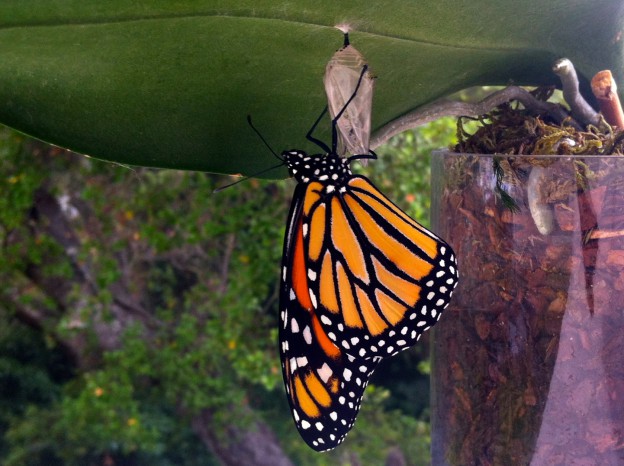Raising Monarch Butterflies
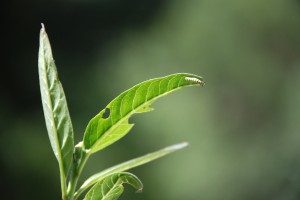
Monarch instar feeding on milkweed soon after hatching
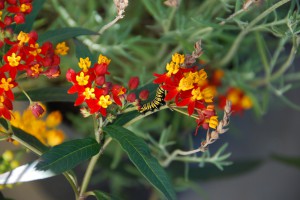
Monarch instar feeding on flowering milkweed

Monarch butterfly about to emerge from chrysalis
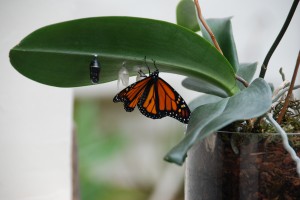
Newly emerged male monarch butterfly
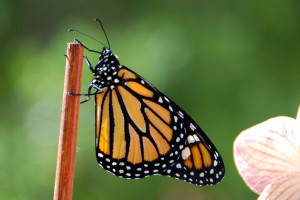
Ready to go!
I’ve had the privilege this month of caring for Monarch butterflies on their 4‑stage journey of life: from a tiny egg… through the different stages of larvae… into pupation (or chrysalis)… and emerging as a gorgeous Monarch butterfly. I feel like a proud (foster) parent. As of this post, we have had 4 Monarchs emerge (all males so far) and several more are on their way. This has been a fascinating project and I’ve learned so much about these wonderful creatures and their amazing transformations.
There are four generations of Monarch butterflies. The first three generations live a few short weeks to emerge, eat, find a mate, lay eggs and die. The last generation live up to 8 months, through the winter, by migrating to warm places like California and Mexico. There they stay until spring, when they make their way back to reproduce. Some Monarchs travel great distances (up to about 3,000 miles from Canada to Mexico) in these fluttering bodies that aren’t at all aerodynamically designed. It’s an amazing thing. They travel across vast areas of ocean and desert (and back again), and somehow they instinctively make it to their destination.
The female Monarch lays her eggs on milkweed plants. Once hatched, the larvae will eat the egg and start in on the milkweed, which provides all the nurishment they need until they are ready to go into pupation.
I have shown some of the stages of metamorphoses (to the left). These are the instars that I was fortunate to watch and care for. We know that all things change… that’s part of life. But with these little creatures, it’s like transformation on speed dial.
Most of these photos were taken outside. However, most of the time I had them indoors where I could keep an eye on them and not let a possible predator or some curious creature interrupt their life cycle.
They tend to be a little messy, as they eat and poop a lot, but fashioning some newspaper around the pot of milkweed kept it more manageable. Plus some of the instars decided to go into pupation on the underside of the newspaper. After the first ones, I helped them on to an orchid plant that was next to the milkweed, and most of them seemed to be happy to find a spot under a leaf to spend their time in the chrysalis stage.
Here’s a video about the migration of the Monarch butterfly from as far away as Canada to a little town in Mexico, well worth a view: NOVA The Incredible Journey of the Butterflies
If you’d like to learn more about these fascinating and beautiful creatures, here are a few links with a lot more information. You may even decide to take on this project yourself!
http://www.mymonarchguide.com/
http://www.monarchwatch.org/index.html
http://www.linknot.com/Magic-Garden/Monarch-eggs.htm
https://www.nwf.org/Wildlife/Wildlife-Library/Invertebrates/Monarch-Butterfly.aspx
http://www.butterfliesandmoths.org/species/Danaus-plexippus
http://www.fcps.edu/islandcreekes/ecology/monarch.htm
http://animals.nationalgeographic.com/animals/bugs/monarch-butterfly/

